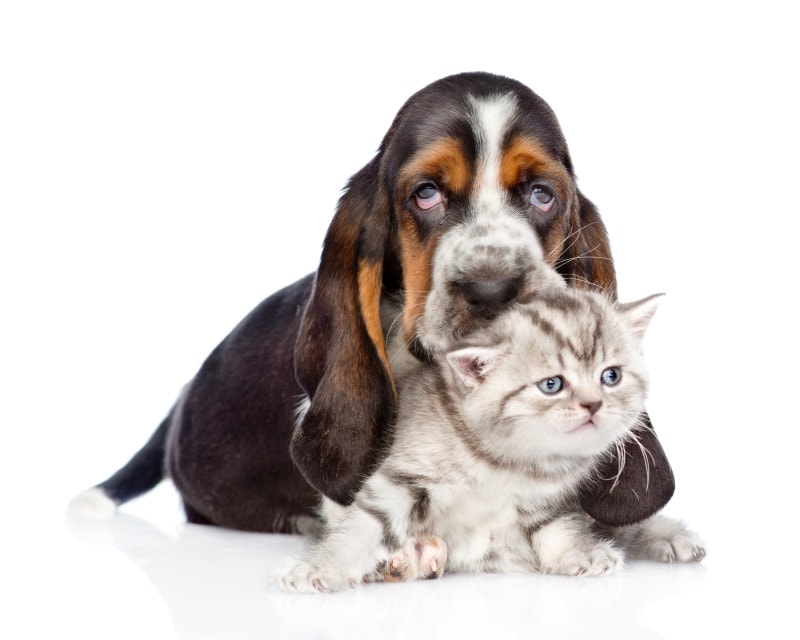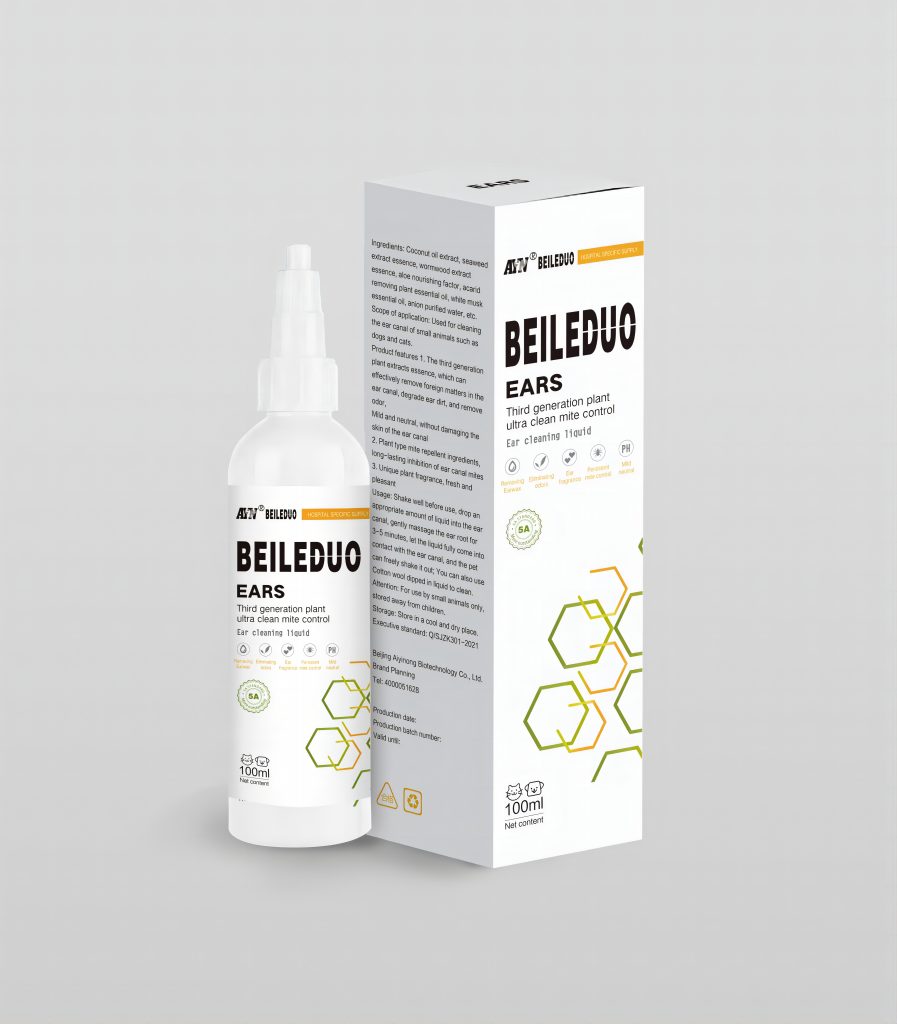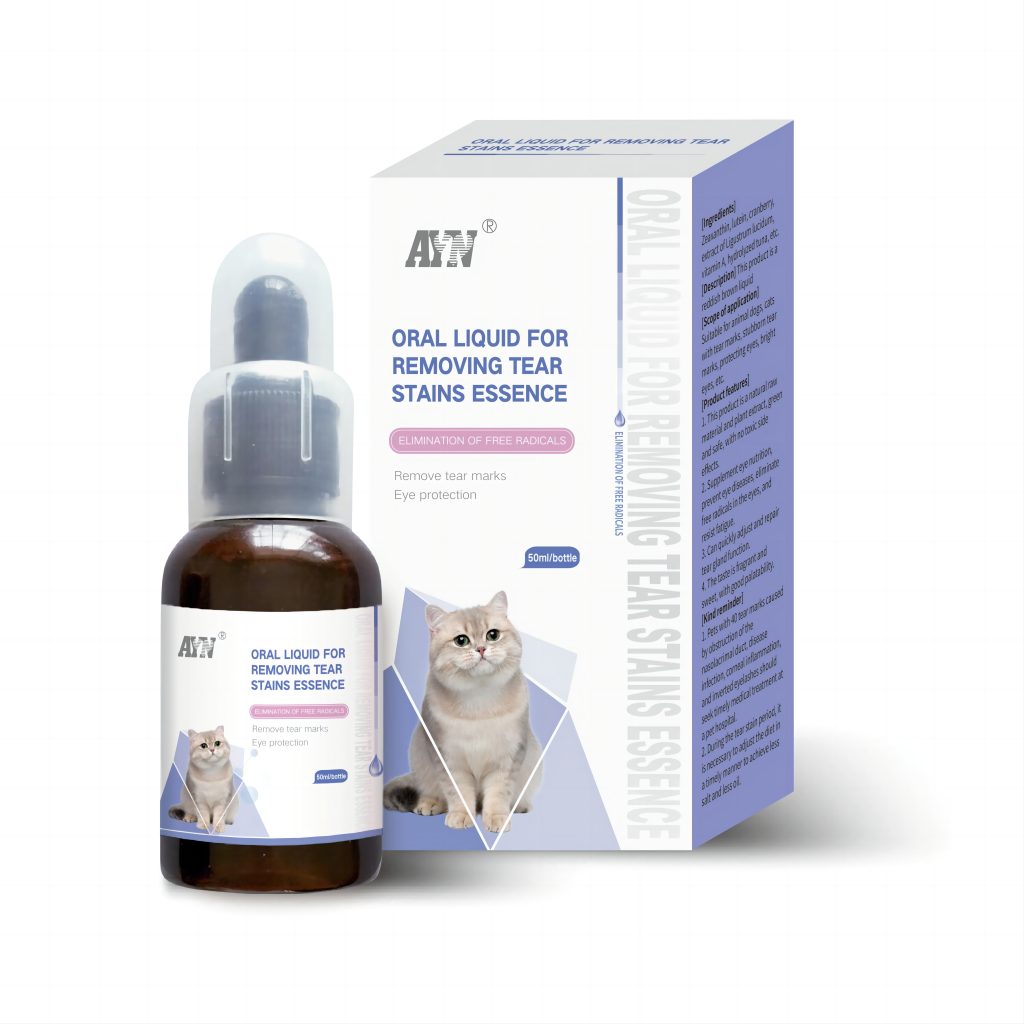What you have to know about dog and cat tears!

Tears not only hide the cute appearance of pets,
It may also affect their health!
In fact, the traces of dirt under the eyes are “tear duct marks”, and too much tears are secreted without timely treatment, and problems will occur. Tears accumulate into tear marks, even if the cat smiles to greet people every day, but there are tears on the face, always look particularly sad, then how is the dog and cat tear marks formed?
Let’s explore the causes of tears and how to solve them
What are dog and cat tears?
- Like humans, dogs and cats produce tears through the lacrimal gland, which is then used to protect the cornea physiologically by blinking and distributing their distinctive third eyelid over the surface of the eye.
- The production of tears is continuous, so tears will continue to enter the corner of the eye, and then through the nasolacrimal duct into the nasal cavity. Therefore, if tears are produced too much or the nasolacrimal duct is blocked, tears will overflow from the inner corner of the eye, which is medically called “dacryorrhea”.
So why are tears red when they are colorless?
This is actually a pot of a substance called “porphyrin” (b O lin). Porphyrins are metabolites that are widely found in animals and are usually excreted along with poop. But dogs and cats are unique in that their porphyrins are also excreted from tears, saliva and urine. Tears containing porphyrin will appear dark red after remaining on the hair for some time.
Tear stains not only affect the level of appearance, but also cause the surrounding skin to be inflamed and grow bacteria and fungi in a humid condition for a long time. If you don’t pay attention to cleaning for a long time, the tears on your dog’s face may appear dark brown instead of rust-like dark red, and smell smelly, which is likely due to a bacterial infection
The cause of tear streaks
01
The nasolacrimal duct in dogs and cats was inflamed and swollen due to infection
The nasolacrimal duct is blocked, and the tears of dogs and cats cannot be discharged from the nasolacrimal duct normally, causing tears to overflow from the corner of the eye.
02
Genetic factors – high incidence of tear marks in some breeds
For example, the natural nasolacrimal duct shorter breeds, such as the Philadelphia cat, Persian cat, Shih Tzu, Pekinese dog, poodle, bichese, bulldog, Pomeranian, etc., the exophthalmos of the eyeball is more serious, resulting in the curvature of the nasolacrimal duct becoming larger, tears can not be discharged through the nasolacrimal duct in time, the normal amount of tears can not be loaded, tears are easily squeezed, and tears overflow from the corner of the eye.
03
Dogs and cats chew excessively when eating
It also compresses the nasolacrimal duct, causing tears to overflow from the corners of the eyes.
Excessive tear production in dogs and cats
01
The irritation of eye disease
· Trichiasis (eyelashes growing into the eye)
· Ectopic eyelashes (eyelashes on the inner eyelid)
· Excessive lacrimal gland
· Eyelid inversion
· Glaucoma, keratitis, conjunctivitis and other eye diseases
02
Irritation of ear canal infection
Pain in the ear canal extends around the eye to stimulate the lacrimal gland, causing tears to overflow from the corner of the eye when too much tears cannot drain through the nasolacrimal canal in time.
03
Food allergy irritation
Common allergic reactions also include increased production of lacrimal glands.
Notice if your pet frequently rubs its face with its feet, licks its front feet, shakes its head, or inflamed ear canals, which are signs of sensitivity. Artificial colors, additives, preservatives, and grain in pet food can all cause symptoms of sensitivity, and food sensitivity can lead to excessive tear production, which can lead to worse tear stains.
04
Environmental stimulus
Long-term exposure to smoke and wind, exposure to second-hand smoke or newly renovated houses, not only affects people but also dogs and cats.
Dog and cat diet problem
When dogs and cats eat high-salt and high-fat food for a long time, dogs and cats can not digest and metabolism normally, and excess salt and fat will be secreted along with the lacrimal glands. After the tears flow out, as the water evaporates, the salt and fat remain on the hair around the eyes, and are slowly oxidized to produce some specific oxidation products, which show dark traces. At the same time, dogs and cats are easy to get angry and aggravate tear marks.
Long-term feeding of food containing mycotoxins or high iodine can also lead to the formation of tear spots in dogs and cats.
How to prevent dog and cat tears?
- Adjust the diet of dogs and cats
Adjust the diet of dogs and cats, ensure the daily intake of water for dogs and cats, and avoid drinking tap water, because some mineral elements in tap water are also the culprit of tears.
Avoid salty foods or human condiments, too much salt intake will cause a serious burden on the metabolism of dogs and cats.
- Trim your hair regularly
Trim the long hair around the eyes regularly to avoid irritation or infection. If the hair has tears, it is recommended to trim it off.
- Keep your ear canal clean and dry
Ear canal infection is a common cause of increased tears in dogs and cats. Healthy ear canals should be clean, odorless and earwax free. If dogs and cats are found to have ear canal diseases, timely help should be provided to dogs and cats to keep their ear canals clean and dry to avoid serious tears caused by ear canal infection.

- Do a good job of daily cleaning and disinfection
Pet owners need to clean the tears and tear marks of dogs and cats on a daily basis. Keep your dog’s face clean by gently wiping the area around your cat’s eyes with a clean, soft, wet towel twice a day. For dogs and cats with serious tear stains, it is recommended to use Aiyinong tear stain removal Essence oral liquid, pet tear stain terminator!

